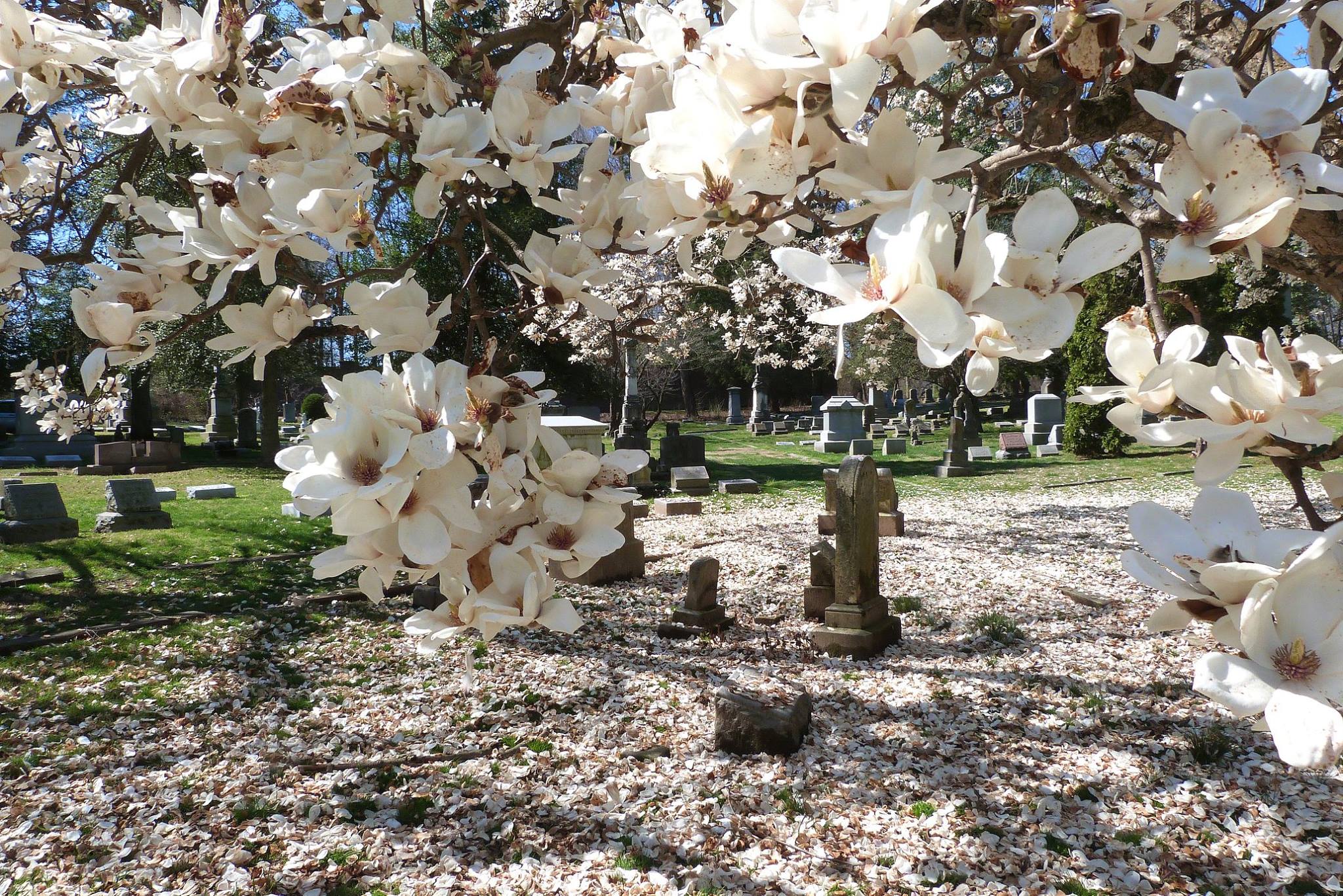Cave Hill Cemetery & Arboretum


Cave Hill Cemetery is a 296-acre Victorian era National Cemetery and arboretum. It is the largest cemetery by area and number of burials in Louisville. Cave Hill was listed on the National Register of Historic Places in 1979. Cave Hill National Cemetery, containing military graves, is also on the National Register, added in 1998.
Cave Hill was chartered in 1848 on what was William Johnston’s Cave Hill Farm, then a rural property some distance east of Louisville. Johnston, who died in 1798, had built the first brick house in Louisville on the grounds circa 1788. City officials had purchased part of the land in the 1830s in anticipation of building a railroad through it, and a workhouse was built there. The railroad was built elsewhere, and the land was leased to local farmers.
In 1846, Mayor Frederick A. Kaye began investigating the possibility of developing a rural or garden-style cemetery on the grounds, a popular concept at the time. Hartford, Connecticut civil engineer Edmund Francis Lee was hired, who planned a cemetery with winding paths, graves across the tops of hills, and lakes and ponds in the valleys. The Cave Hill Cemetery Co. was chartered in February 1848, and the cemetery was dedicated on July 25, 1848. Reverend Doctor Edward Porter Humphrey delivered the dedicatory address and elaborated on the idea of the garden cemetery, noting, among other things, that “. . .Reason and taste suggest that [this cemetery] should be decorated appropriately by the beautiful productions of our great Creator. . .”
Before the era of large municipal parks, it was common for cities to promote a garden cemetery as a green oasis and recreation destination, and Louisville was no exception. This largely ended with the opening of nearby Cherokee Park in 1892. After administrators sold several acres of land for the burial of Union soldiers during the Civil War, local Confederate supporters purchased nearby land as well. Several deceased patients from the Brown General Hospital and other nearby army medical facilities were interred in Cave Hill Cemetery.
The grounds were expanded and remapped in 1888 to their modern size of nearly 300 acres (1.2 km2). In the 1980s, razor wire was added to the brick walls surrounding Cave Hill to keep out after-hours visitors.
The first scenic overlook for the cemetery, Twin Lakes Scenic Overlook, opened on August 20, 2008.
There were about 120,000 people interred by 2002, with space remaining for 22,000 more graves. Notable among those interred in the cemetery is:
Distance Unit:
Distance Unit: